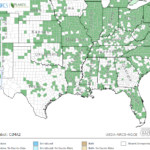Cicuta maculata
USDA, NRCS. 2018. The PLANTS Database (http://plants.usda.gov, 28 March 2018). National Plant Data Team, Greensboro, NC 27401-4901 USA.
Illustration: USDA-NRCS PLANTS Database / USDA NRCS. Wetland flora: Field office illustrated guide to plant species. USDA Natural Resources Conservation Service.
What is Spotted Water Hemlock?
Physical Characteristics
- 2-6 feet tall
Leaves:
- Egg shaped
- Up to 1 foot long
- Up to 10.23 inches wide
Small Leaves:
- Sword shaped
- 0.78-4.72 inches long
- 0.2-1.19 inches wide
- Sharp toothed along the edges
Flowers:
Fruit:
- Oval shaped
- 0.08-0.16 inches long
- 0.08-0.13 inches wide
- Reddish brown
- Moderate to large oil tubes
Seeds:
- Not very oily
- Flat or slightly caving in on surface
Roots:
- Fleshy
- Fibrous
Where Does it Grow?
Spotted water hemlock can be found along streams, in marshes and other wet places.
Pros and Cons of Spotted Water Hemlock
Spotted water hemlock is dangerously poisonous and consumption could cause death; therefore it should not be cultivated. Submerged portions of all aquatic plants provide habitats for many micro and macro invertebrates. These invertebrates in turn are used as food by fish and other wildlife species (e.g. amphibians, reptiles, ducks, etc.). After aquatic plants die, their decomposition by bacteria and fungi provides food (called “detritus”) for many aquatic invertebrates.




